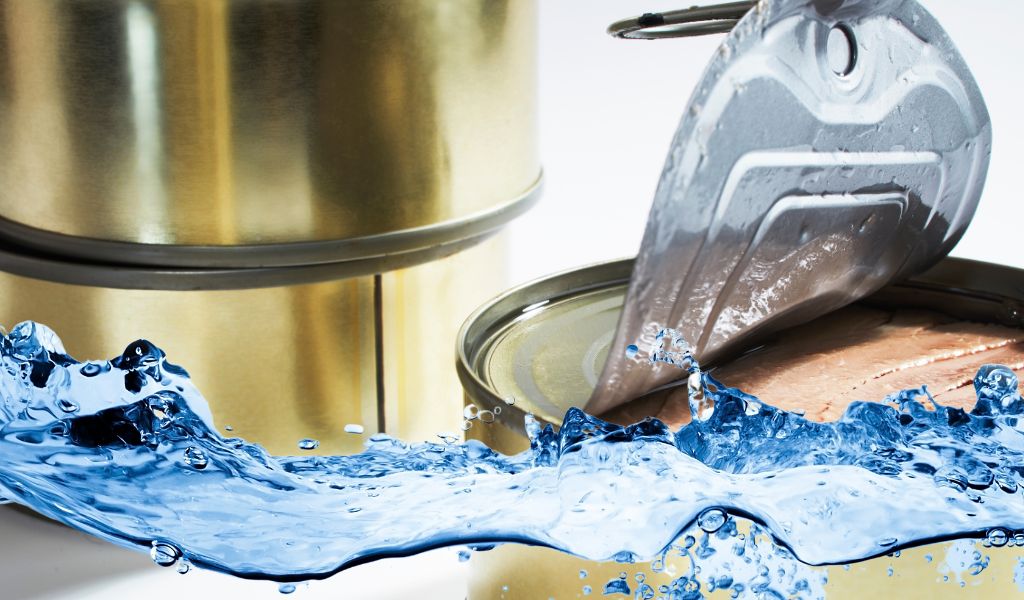While dogs are primarily meat eaters, they can still enjoy a variety of other foods in moderation.
One such food is canned tuna in water, which is a staple in many human diets.
However, before you share your tuna sandwich with your pooch, it’s important to know whether it’s safe for dogs to eat canned tuna in water.
Dogs can eat canned tuna in water, but there are some things to keep in mind. Tuna is a great source of protein, omega-3 fatty acids, and other essential nutrients that can benefit your dog’s health.
Benefits of canned tuna for dogs
High in protein: Tuna is a lean protein source that can help build and maintain your dog’s muscle mass.
Good source of omega-3 fatty acids: Omega-3 fatty acids are essential for your dog’s overall health, including brain function, joint health, and a healthy coat and skin.
Low in fat: Canned tuna in water is low in fat, making it a great option for dogs who need to lose weight or maintain a healthy weight.
Convenient and easy to prepare: Canned tuna is a convenient and easy-to-prepare snack that can be added to your dog’s meals or used as a training treat.
Risks of canned tuna for dogs
Mercury poisoning: Tuna is a large fish that can contain high levels of mercury, which can be toxic to dogs in large quantities.
It’s important to limit your dog’s tuna intake and choose brands that are low in mercury.
Digestive problems: Some dogs may experience digestive problems, such as vomiting or diarrhea, if they eat too much tuna.
It’s best to introduce canned tuna gradually into your dog’s diet and monitor their reaction.
Sodium content: Canned tuna can be high in sodium, which can be harmful to dogs with certain health conditions, such as kidney disease or heart problems.
Look for low-sodium brands or rinse the tuna in water before feeding it to your dog.
At a glance…
• Dogs can safely eat canned tuna in water, but consumption should be limited to one or two small servings per week.
• Canned tuna is a lean protein source and provides essential nutrients such as omega-3 fatty acids and vitamins.
• There are some risks associated with feeding your dog canned tuna, such as mercury poisoning, digestive problems, and increased sodium intake.
• Check the ingredients list to make sure the tuna is in water, not oil or added flavorings, and limit intake of canned tuna as a treat.
• Variety is important for your dog’s health so make sure to offer a balanced diet that includes other sources of protein and nutrients.
Frequently asked questions
Q: How much canned tuna can I give my dog?
A: It’s recommended to limit your dog’s canned tuna intake to one or two small servings per week, depending on their size and activity level.
Q: Can I feed my dog canned tuna in oil?
A: No, it’s best to stick to canned tuna in water as oil can be high in fat and calories.
Q: Can puppies eat canned tuna?
A: It’s best to avoid feeding puppies canned tuna as it can upset their developing digestive system.
Additional tips for feeding canned tuna to your dog
Always check the ingredients list to make sure the tuna is canned in water and not in oil or other additives that can be harmful to dogs.
If you’re unsure about the safety or nutritional value of a particular brand of canned tuna, consult with your veterinarian before feeding it to your dog.
Avoid giving your dog canned tuna that contains added flavourings, such as garlic or onion, as these can be toxic to dogs in large quantities.
Consider using canned tuna as a special treat or reward, rather than a regular part of your dog’s diet.
Variety is important for your dog’s health, so make sure to offer a balanced diet that includes other sources of protein and nutrients.
If you’re concerned about the mercury levels in canned tuna, you can opt for other types of fish that are lower in mercury, such as salmon or sardines.
Again, it’s best to consult with your veterinarian to determine the best options for your dog’s individual needs.
Conclusion and final thoughts…
In conclusion, canned tuna in water can be a healthy and nutritious snack for your furry friend, but it’s important to feed it in moderation and choose low-mercury brands.
As with any new food, it’s best to introduce canned tuna gradually into your dog’s diet and monitor their reaction.
By following these guidelines, you can safely incorporate canned tuna into your dog’s diet and provide them with a tasty treat that they’ll love.




